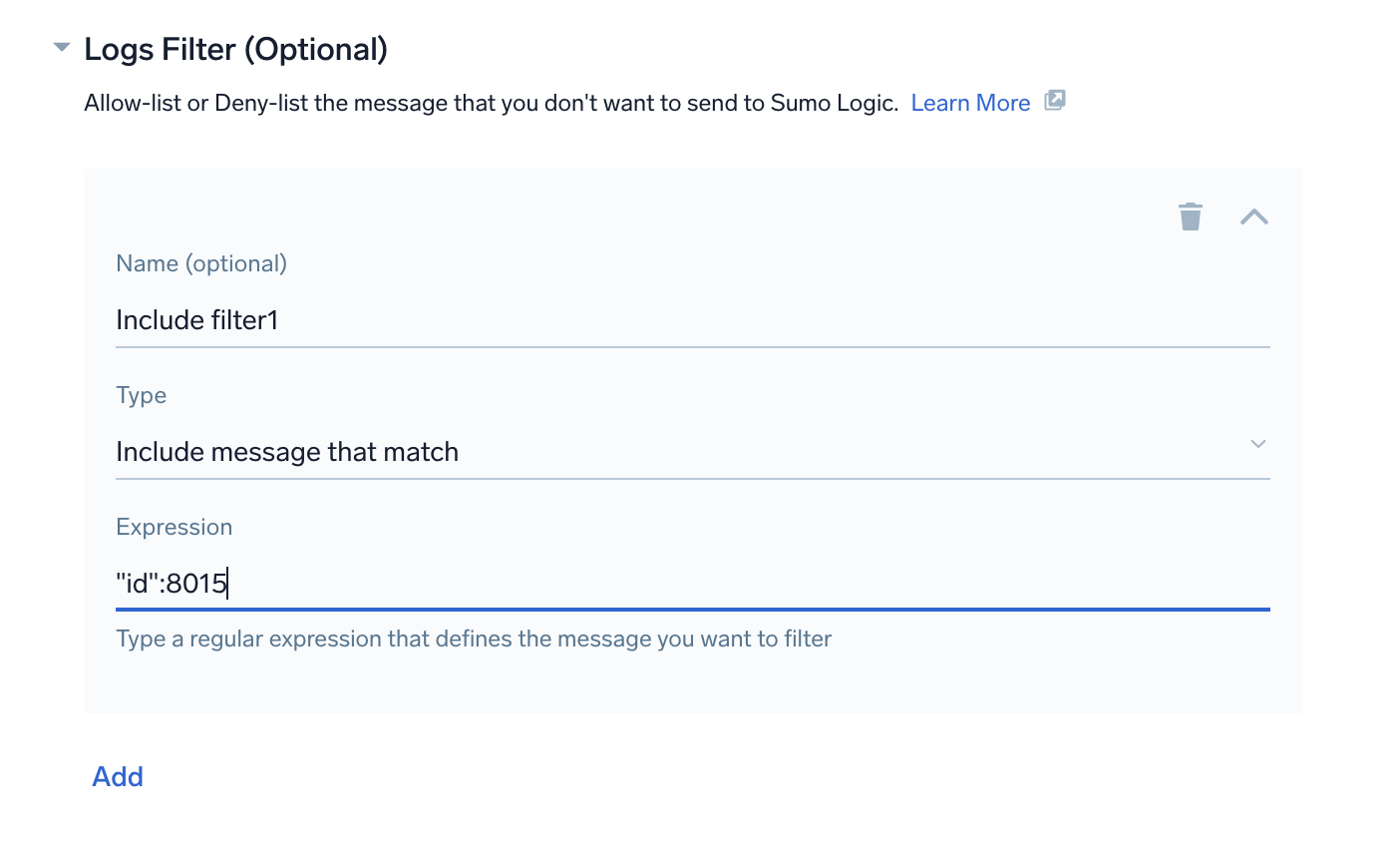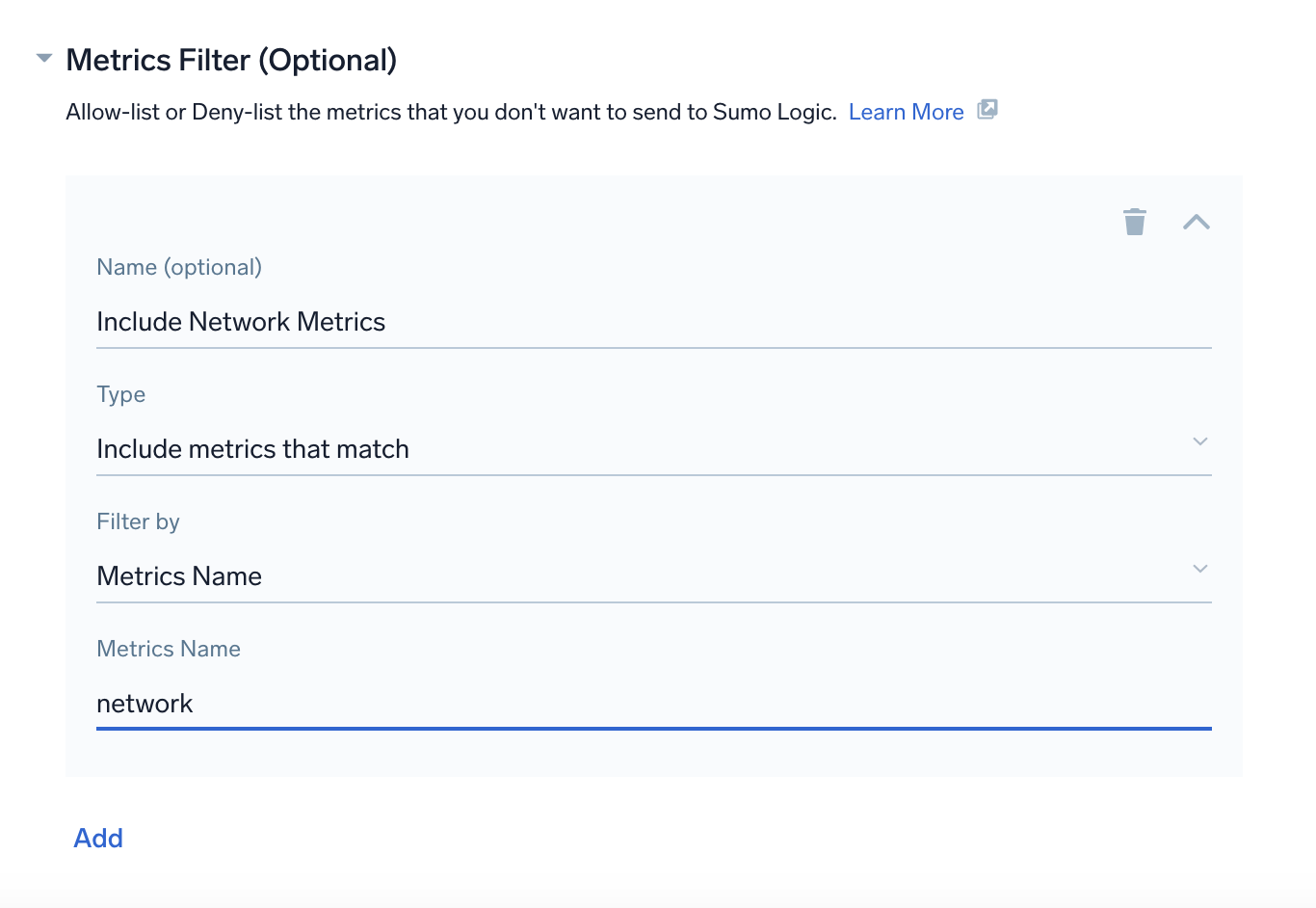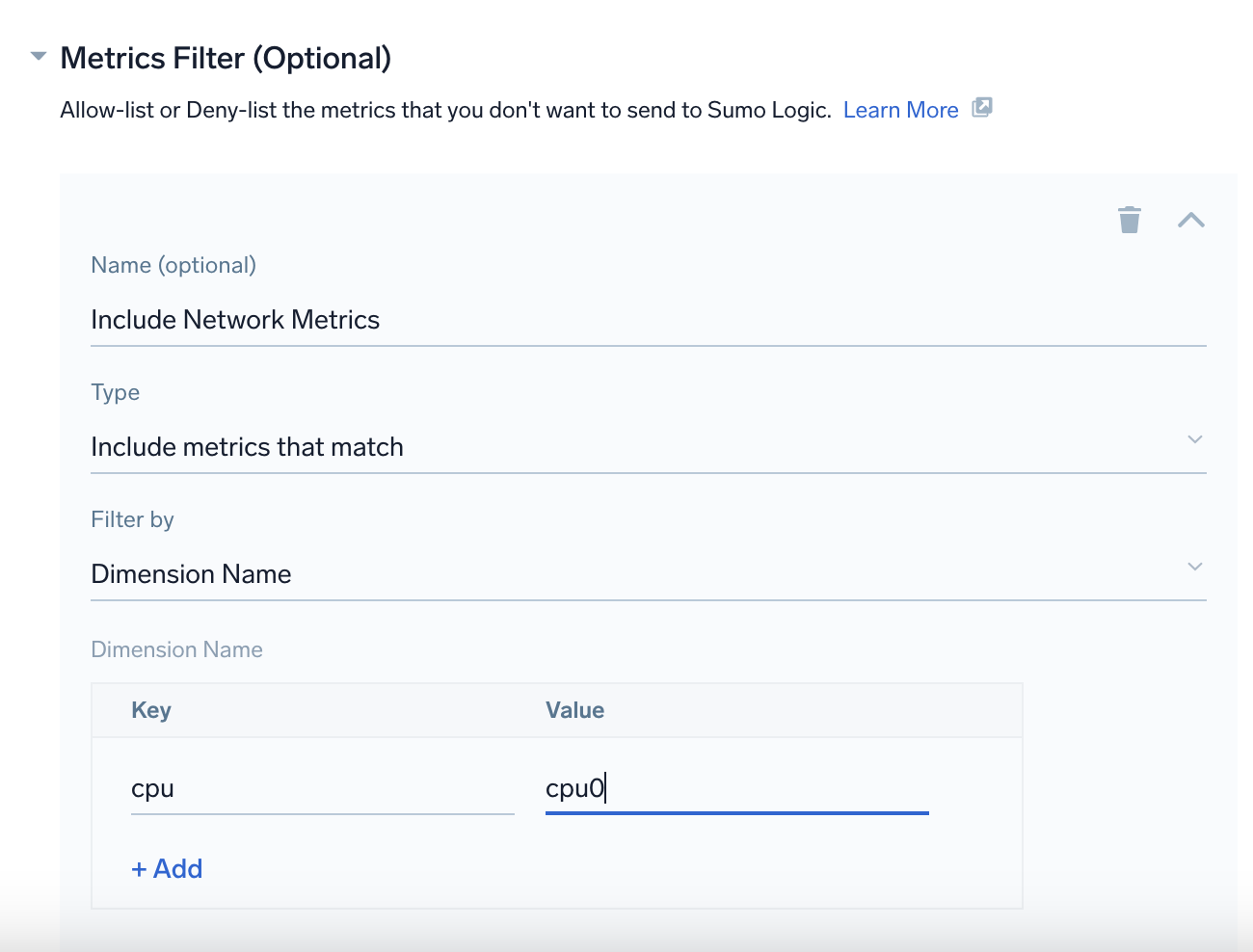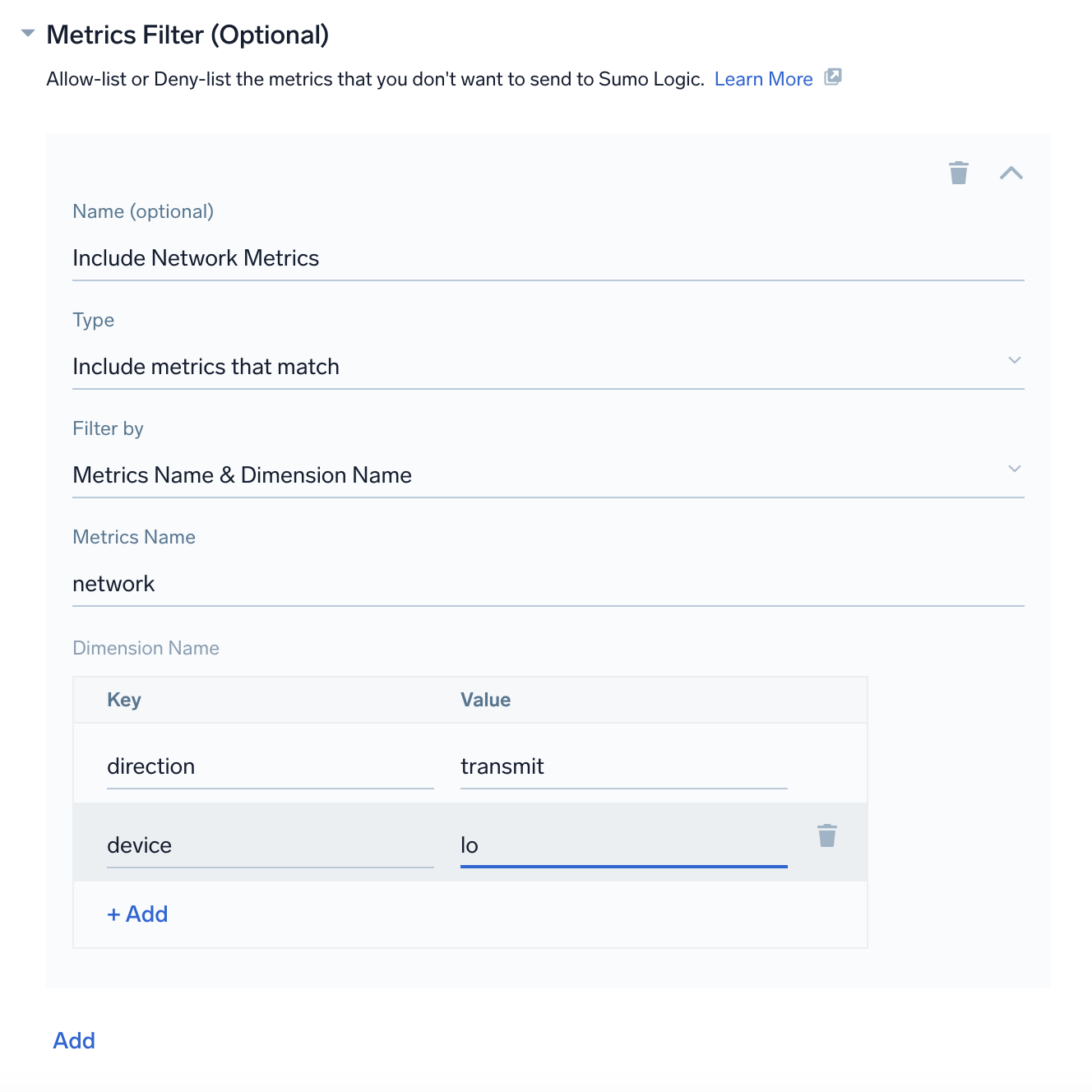OpenTelemetry Remote Management Include and Exclude Rules
You can use include and exclude processing rules to define which data is sent to Sumo Logic using the OpenTelemetry Collector. These rules internally utilize the filter processor to filter data for logs and metrics.
- Exclude rule functions as denylist filters, ensuring that matching data is not sent to Sumo Logic.
- Include rule functions as allowlist filters, ensuring that only matching data is sent to Sumo Logic.
As a best practice, configure these rules to filter the smaller volume of data for optimal performance:
- If you want to collect the majority of data from a source template, use exclude rules to match (filter out) the smaller volume of data.
- If you want to collect a small set of data from a source template, use include rules to match (filter in) the smaller volume of data.
Logs: Include and exclude rules
Examples
To include only messages from a Windows Event log with ID 8015, you can add a Logs Filter to the source template. Select the Type of the filter as "Include messages that match" and use the following filter regular expression:
.*"id":8015.*

Metrics: Include and exclude rules
Examples
Metrics filters can be configured in a source template by specifying:
- Filter by metrics name
- Filter by dimension
- Filter by metric name and dimension
Specify the filter name, Type (include or exclude), and Filter By criteria.
Filter by metrics name
To filter by the name of a metric, select this option and provide a regex that matches the metric name.
For example, to collect only network metrics while collecting host metrics, specify network as the metric name.

Filter by dimension
To filter by metric dimensions, select this option and specify key-value pairs in the dimension table.
- The key must match the exact dimension name.
- The value can be a regex matching the corresponding value.
- Multiple key-value pairs are evaluated using an
ANDcondition.
For example, when collecting host metrics, you can filter CPU metrics data for a specific CPU (say cpu0), and you can mention the respective key value pair in the dimension table.

Filter by metrics name and dimension
To filter by both metric name and dimensions, specify a regex for the metric name along with key-value pairs for dimensions.
- The key must match the exact dimension name.
- The value can be a regex matching the corresponding value for the key given.
- The metric name and all key-value pairs are evaluated using an
ANDcondition.
For example, when collecting host metrics, you can filter network metrics for a specific device and direction by specifying:
- Metric name regex:
network - Dimension key-value pairs:
device=lo,direction=transmit

Rules and limitations
When creating regular expression rules, adhere to the following guidelines:
- Rules must comply with RE2 syntax.
- Exclude rules take precedence over include rules. Include rules are processed first, but if an exclude rule matches data that also matches the include rule, the data will be excluded.
- When multiple rules are listed, the assumed Boolean operator is
OR. - To filter for a single dimension key with multiple possible values, use the | operator. Example: For
cpu0andcpu1, specify the dimension value as:cpu0|cpu1 - If your rule matches any part of a log line, the entire log line will be matched.
- For single-line messages, it is not necessary to prefix or suffix the regex with
.*.